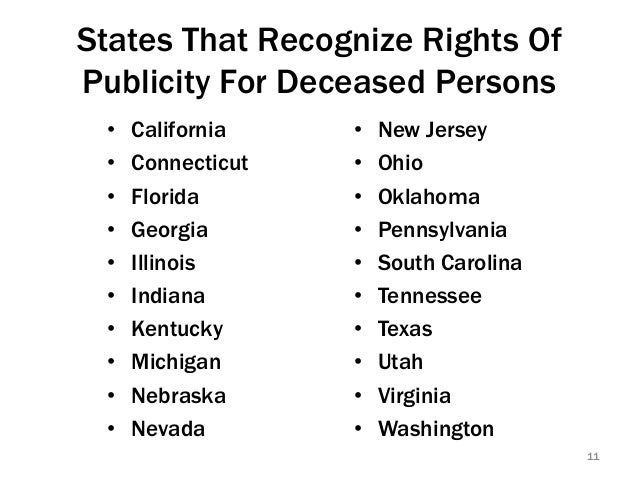Some "family members" can be evicted in landlord/tenant court. Heckman v. Heckman, 2017 NY Slip Op 27122 - NY: Appellate Term, 2nd Dept. 2017:
"Petitioner, the daughter of the deceased former owner of the subject premises and the trustee of a trust which the former owner had established and which is the current owner of the subject premises, brought this summary proceeding in her capacity as trustee, pursuant to, among other provisions, RPAPL 713 (7), alleging, insofar as relevant to this appeal, that occupant, the daughter-in-law of the deceased former owner, is a licensee whose license has been revoked. Following a nonjury trial, the District Court, finding that occupant is a licensee but that occupant had established the applicability of the so-called "familial exception" to eviction by summary proceeding, dismissed the petition.
A summary proceeding may be maintained only where authorized by statute (
see Dulberg v Ebenhart, 68 AD2d 323, 328 [1979]). RPAPL 713 is the statutory source for summary proceedings where there is no landlord-tenant relationship between the parties (
see Federal Natl. Mtge. Assn. v Simmons, 48 Misc 3d 24, 26 [App Term, 1st Dept 2015]). Insofar as is relevant here, RPAPL 713 (7) (b) permits the maintenance of a summary proceeding against persons who are in occupancy of real property pursuant to a license which has been revoked. Here, the District Court, while finding that occupant is a licensee, nevertheless refused to allow petitioner, in her capacity as trustee, to avail herself of this statutory remedy, invoking the so-called "familial exception." However, the relevant appellate case law provides no basis for a court, upon determining that an individual falls within a category of respondents that are subject to eviction pursuant to RPAPL 713 (or for that matter RPAPL 711), to dismiss the petition because of a "familial exception." Consequently, and for the reasons stated below, we reverse and grant a final judgment of possession to petitioner.
Analysis of this issue begins with
Rosenstiel v Rosenstiel (20 AD2d 71, 76 [1963]), in which the Appellate Division held that a summary proceeding by a husband against a wife did not lie in a situation where "possession of the premises exists because of special rights incidental to the marriage contract and relationship," and not by virtue of a license or any other special arrangement with her husband. The court's determination that the respondent could not be found to be a licensee was based upon the existence of a support obligation (
id. at 77), which obligation is recognized to extend to either spouse and to minor children (
see generally Family Ct Act § 412). However, in situations in which such an obligation did not exist or had been fully satisfied, appellate courts have found the existence of a license and allowed the maintenance of summary proceedings by a husband against his wife (
see Halaby v Halaby, 44 AD2d 495 [1974];
Tausik v Tausik, 11 AD2d 144 [1960], affd 9 NY2d 664 [1961]) and by a decedent's estate against the decedent's cohabitatant (
see Young v Carruth, 89 AD2d 466 [1982]).
Despite these appellate cases, some lower courts began to rely on
Rosenstiel, even in the absence of legal support obligations, to hold that a summary proceeding against an unmarried cohabitant did not lie because "unmarried occupants who reside together as husband and wife acquire some rights with respect to continued occupancy of the apartment they shared not unlike those acquired by a spouse" (
Minors v Tyler, 137 Misc 2d 505, 507 [Civ Ct, Bronx County 1987];
but see Young, 89 AD2d at 469), thus creating what became known as the "familial exception" to the maintenance of a summary proceeding brought pursuant to RPAPL 713 (7).
In
Braschi v Stahl Assoc. Co. (74 NY2d 201 [1989]), the Court of Appeals "interpreted a regulation [9 NYCRR 2204.6 (d)] prohibiting a landlord of a rent-controlled building from evicting a member of the deceased tenant's family' to include relationships which are not by blood or marriage" (
Preferred Mut. Ins. Co. v Pine, 44 AD3d 636, 640 [2007]). Thereafter, some lower courts began to rely on
Braschi to hold that individuals who fit within this expanded definition of "family" were protected, under
Rosenstiel, from eviction by a "family" member via a summary proceeding (
see e.g. Kakwani v Kakwani, 40 Misc 3d 627 [Nassau Dist Ct 2013];
Robinson v Holder, 24 Misc 3d 1232[A], 2009 NY Slip Op 51706[U] [Suffolk Dist Ct 2009];
Williams v Williams, 13 Misc 3d 395 [Civ Ct, NY County 2006];
DeJesus v Rodriguez, 196 Misc 2d 881 [Civ Ct, Richmond County 2003];
but see Piotrowski v Little, 30 Misc 3d 609 [Middletown City Ct 2010];
Drost v Hookey, 25 Misc 3d 210 [Suffolk Dist Ct 2009];
Lally v Fasano, 23 Misc 3d 938 [Nassau Dist Ct 2009]). However, since
Rosenstiel does not provide a basis for the creation of a bar to the maintenance of summary proceedings in situations where there is no legal support obligation (
see Young, 89 AD2d 466;
Halaby, 44 AD2d 495;
Tausik, 11 AD2d 144, affd 9 NY2d 664), there was no "familial exception" to expand pursuant to
Braschi. In any event,
Braschi merely expanded the statutory right to succeed to rent-controlled tenancies, which was already enjoyed by traditional family members, to individuals who were recognized as family members by society, and its holding has no bearing here (
see Preferred Mut. Ins. Co., 44 AD3d at 640 ["The expansive definition of family set forth in
Braschi. . . . has no bearing on interpreting different statutes with different statutory purposes" or on the interpretation of contractual provisions]).
In view of the foregoing, and in conformity with the decisions of the Appellate Term for the Second, Eleventh and Thirteenth Judicial Districts (
see Pugliese v Pugliese, 51 Misc 3d 140[A], 2016 NY Slip Op 50614[U] [App Term, 2d Dept, 2d, 11th & 13th Jud Dists 2016];
see also Odekhiran v Pearce, 54 Misc 3d 126[A], 2016 NY Slip Op 51779[U] [App Term, 2d Dept, 2d, 11th & 13th Jud Dists 2016]) and with this court's own prior decisions implicitly holding that there is no bar to the maintenance of a licensee proceeding in situations in which the occupant can properly be held to be a licensee (
see DiStasio v Macaluso, 47 Misc 3d 144[A], 2015 NY Slip Op 50694[U] [App Term, 2d Dept, 9th & 10th Jud Dists 2015];
Rodriguez v Greco, 31 Misc 3d 136[A], 2011 NY Slip Op 50696[U] [App Term, 2d Dept, 9th & 10th Jud Dists 2011];
cf. Sears v Okin, 6 Misc 3d 127[A], 2004 NY Slip Op 51691[U] [App Term, 2d Dept, 9th & 10th Jud Dists 2004] [holding that a nonpayment proceeding was maintainable against a former domestic partner where the record supported the trial court's ruling that there was a landlord-tenant relationship between the petitioner and his former domestic partner]), while recognizing that there are familial relationships that will often prevent an occupant from fitting into a category of respondent subject to eviction pursuant to RPAPL 713 (or for that matter RPAPL 711), we explicitly hold that, where, as here, it is clear that an occupant does fit into one of the RPAPL 711 or 713 categories, there is no "familial exception" bar to the maintenance of a summary proceeding."





























